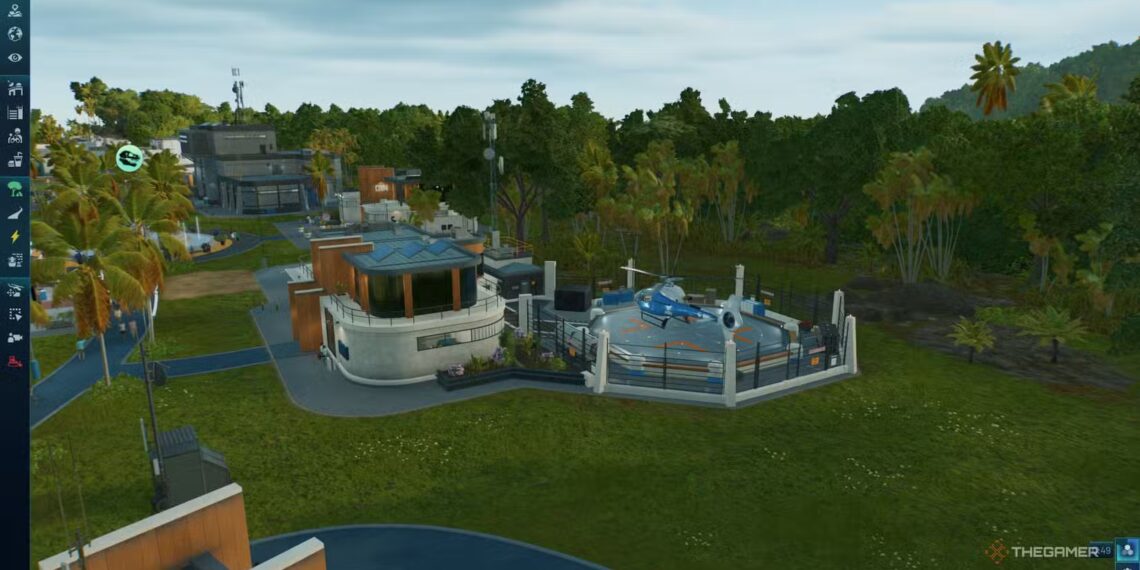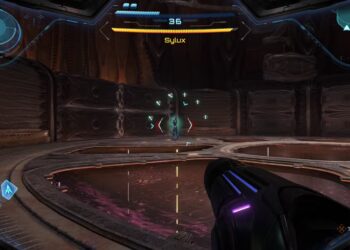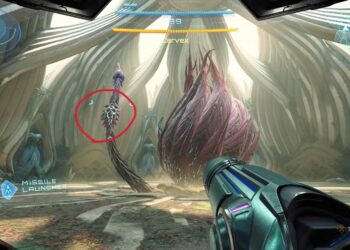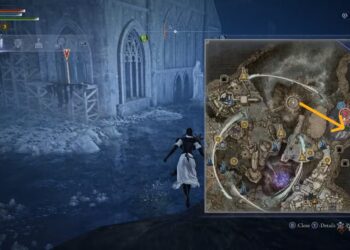Select Language:
When your dinosaurs cause chaos or you need to transfer one from one enclosure to another, moving animals in Jurassic World Evolution 3 becomes very important.
At the start of the game, you’ll learn how to tranquilize and move dinosaurs and reptiles. However, it’s easy to forget this information over time. Eventually, a few stegosauruses might break their fences, and you’ll need to stop them. Here’s everything you need to know about transporting dinosaurs in Jurassic World Evolution 3.
How to Find and Tranquilize Escaped Dinosaurs
There are several reasons you might need to tranquilize and move dinosaurs or reptiles:
- Unhappy or uncomfortable dinosaurs may try to break fences and escape, putting park guests at risk.
- Sick dinosaurs need to be safely transported to the Paleo-Medical Facility.
- Aggressive or unwanted dinosaurs may need to be released into the wild if they cannot coexist with others.
If fences break, guests and staff are in danger. It’s your job to keep everyone safe and get the animals back into their enclosures. Quick responses can mean the difference between a high park rating and distressed guests running for safety.
Every park needs a Response Facility—it’s best to build one immediately. The Response Facility costs $100,000 and requires two power units to operate properly. To keep it running smoothly, build a Power Station nearby, connect it with Substations, and add a backup generator in case of power outages.
The Response Facility provides Rangers to patrol enclosures and check on dinosaur health, and a Capture Team to tranquilize animals for transportation. You can control these vehicles manually or send them on patrol through security cameras and ranger posts.
How to Set Up Security and Capture Operations
Place Security Cameras around the park with a wide view of enclosures. Assign a Capture Team to each camera by clicking on it, so they can quickly spot and tranquilize dinosaurs without your help. This setup is crucial for quick response when dinosaurs escape or become sick.
For larger parks, it’s recommended to build multiple Response Facilities to cover the entire area effectively with Capture and Ranger teams.
Each enclosure should have a Ranger Post nearby, with its patrol radius covering most of the area. Assign Ranger teams to these posts to monitor dinosaur health, refill feeders, and respond quickly to emergencies. These posts can also have Capture Teams and Mobile Vet Units ready for immediate action.
If an escaped dinosaur isn’t covered by a security camera or Ranger Post, you’ll need to manually send out a Capture Team. To do this, find the Response Facility, select the helicopter at the helipad, click Add Task, and choose the dinosaur. It’s easiest when the game is paused.
The helicopter will fly to the animal, tranquilize it with a dart, and leave it sleeping on the ground, ready for transport.
How to Transport a Tranquilized Dinosaur
When a dinosaur or reptile has been tranquilized, you can move it back to its enclosure, to the Paleo-Medical Facility if it’s sick or injured, or reintroduce it into the wild. Use the Transport button located below the scenery, path, and power options on the left side of the screen. Select Transport, click on the tranquilized animal, and choose what’s needed.
Rewilding is a good option for those dinosaurs that can’t stay in captivity because they often break out due to aggressive behavior.
If the Ranger Team finds an animal is sick or injured, they need to scan it to determine what’s wrong. After diagnosis, send it to the medical facility for treatment. If the animal escaped because of a power outage or stress, you can transport it back to its enclosure and work on improving the environment to prevent future escapes.







